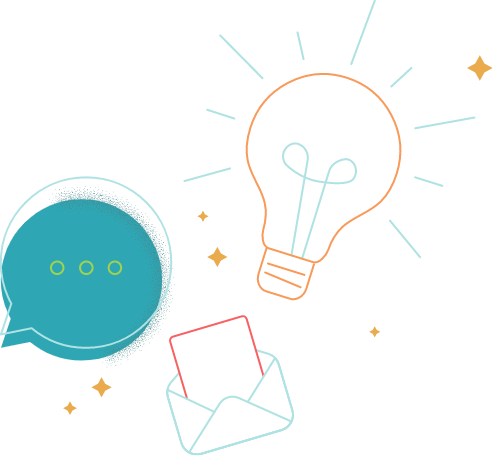Do the words “data analysis” send a shiver down your spine? I get it. However, data analysis is a huge thing for marketing. It tells you how your campaigns are performing and what you should do next to improve your pipeline. It’s the precursor to just about every decision you’ll make.
Still, that doesn’t change the fact that it’s just plain tough — especially if you’re not formally trained in it.
Here, I’m talking through key ways you can use AI to your advantage for marketing data analysis, as well as what it cannot do for you — so you don’t spend time trying to fit a round peg in a square hole, so to speak.
How Do Marketers Feel About Data Analysis?
According to Marketing Week’s 2024 Career & Salary Survey, marketers say that “a lack of data and analytics skills” is far and away the largest skill gap in their departments at 36.9%. The next closest gap, a lack of performance marketing skills, comes in at 19.6%.
Struggling with data and analytics isn’t unusual. It’s a complex talent that requires effort and intention to develop over time. It takes expertise in statistical analytics, data management and math, which aren’t everyone’s strengths.
Still, most marketers need to do data analytics to some degree, which leaves a lot of them asking: Can ChatGPT do data analysis? The answer isn’t so straightforward. Yes, it absolutely can — but it can’t do everything. Sound familiar?
Similar to using Gen AI tools to aid aspects of your writing, it’s a valuable tool for data analytics — and maybe even more so, especially if you’re not trained in it. But as the human in the equation, you still need to take part in the process.
How ChatGPT Can Help You Analyze Data
Let’s start with the good news. ChatGPT can handle a range of data analysis tasks, from running statistical tests to creating visualizations. There’s also a chance to step up your performance measurement game using ChatGPT.
As our content marketing management survey uncovered, most marketers aren’t taking full advantage of ChatGPT for benchmark analysis. If that’s you, here are a few useful ways you can start using ChatGPT to help analyze your marketing data:
Data Interpretation and Summarization
Consider this: You’ve just gathered a slew of valuable data from your go-to tool, but it doesn’t mean much until you’ve interpreted it and summarized your findings. This process traditionally takes time, but ChatGPT can help speed things up in a few ways:
- Pattern Identification: Analyze customer data, survey responses and marketing performance metrics to identify trends or anomalies.
- Insights Extraction: Provide high-level summaries or actionable insights from raw data to help paint a picture.
- Natural Language Explanations: Translate complex data (e.g., statistical output) into plain language so it’s easier to understand (and present to board members).
Visualization Recommendations
If you need to visualize your data, there are a couple of different ways you can ask ChatGPT for help. The first is to ask for recommendations on the best way to visualize the data you have. That could be a bar chart for categorical data or scatter plots for correlations.
Once you know which technique is best for you, ChatGPT can even create the graph for you. Simply input your data and request the visual format and voila! You can even ask ChatGPT to generate code for visualizations (e.g., Python, Excel) if you prefer that approach.
Campaign Performance Analysis
Compare performance metrics (e.g., CTR, ROI, conversion rates).
Assist in A/B test analysis and suggest improvements.
What ChatGPT Cannot Do When It Comes to Data Analytics
Now here’s the bad news: ChatGPT can’t do all the work for you. We still don’t have robot butlers, even for data analysis. ChatGPT is just a tool, after all.
Here’s what ChatGPT can’t do when it comes to marketing data analysis:
Perform Direct Database Queries or Data Connection
ChatGPT cannot directly connect to your databases, CRM systems or analytics platforms like Google Analytics. You’ll need to be comfortable navigating these platforms and their features, extracting data and prompting ChatGPT in a way it can understand exactly what you want it to do.
Depending on your role in the marketing department, you may already be familiar with Google Analytics, which gives you a headstart. If you’re not, Google offers tons of great, free courses to get you up to speed.
Understand Contextual Nuance
Everyone knows ChatGPT isn’t perfect, which means it may misinterpret context-specific or highly nuanced data trends. It lacks domain expertise, like your brand tone or niche industry trends, so you should always double and triple-check your data and never rely on ChatGPT 100% to inform your marketing decisions.
Ensure Compliance and Abide by Your Ethical Standards
Data is highly regulated, and tools like ChatGPT don’t ensure compliance with data privacy laws like GDPR or CCPA. This is one of the most important aspects of handling data, and it requires human oversight to avoid hefty fines and penalties. Gen AI also can’t understand your ethics. If you’ve extracted data that’s biased, for example, you probably don’t want to use it and need to omit it from your Gen AI data analysis adventures entirely.
Is ChatGPT a Cure-All for Data Analysis Paralysis?
I’ll end with this: A hammer can absolutely build a house, but not on its own — it needs someone to swing it.
As a marketer, you don’t have to be an expert in data analysis. But if you know how to use the tools that can make you like them you’re off to the races. By that, I mean it’s more important to know how to learn (and be a good learner) than to know everything. That’s not just because “knowing everything” sounds exhausting. It’s a practical approach to work that keeps you flexible in a world where tech and its capabilities are always changing — as is the data itself.
Give yourself the freedom to focus on learning about different tools instead of trying to become a mathematician overnight. You’re also playing by one of the critical rules of AI, which is that humans should do the thinking and machines should do the working.
Perhaps most importantly, you’re engaging with your data. You’re juggling your business goals, target audiences and SEO insights. That means you won’t have to lean too heavily on AI tools when a new question or challenging project comes up. Your brain will be limber, informed and ready to queue up some creative problem-solving.






